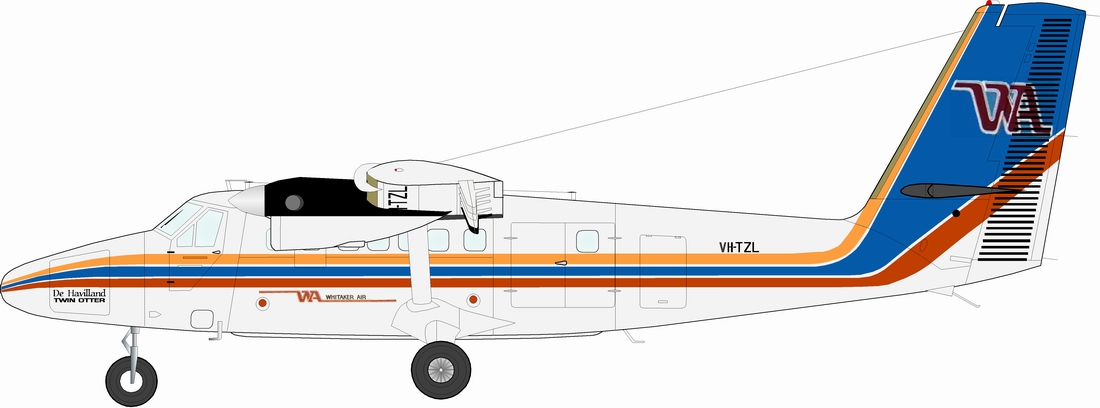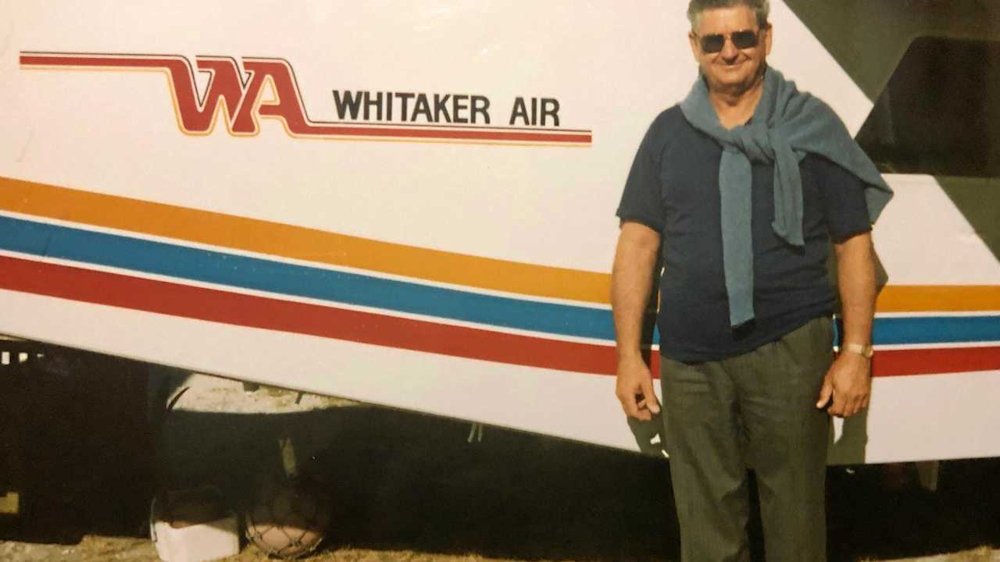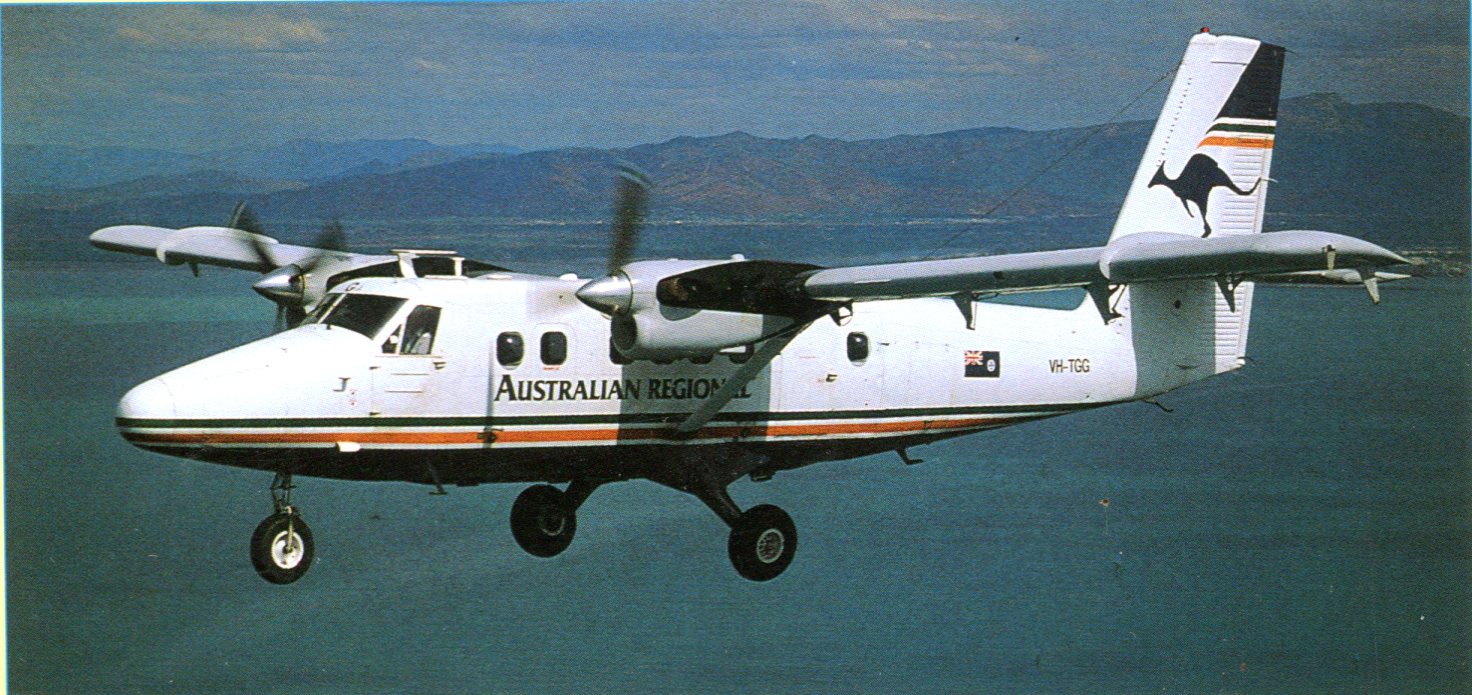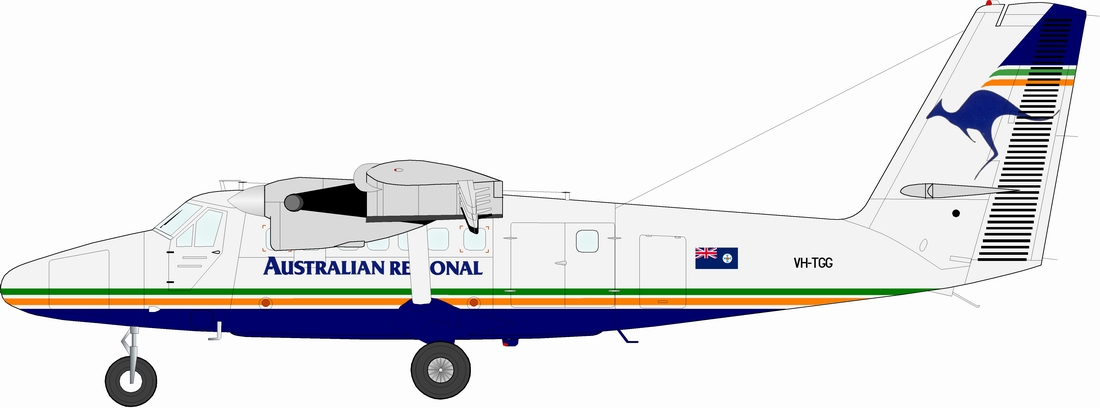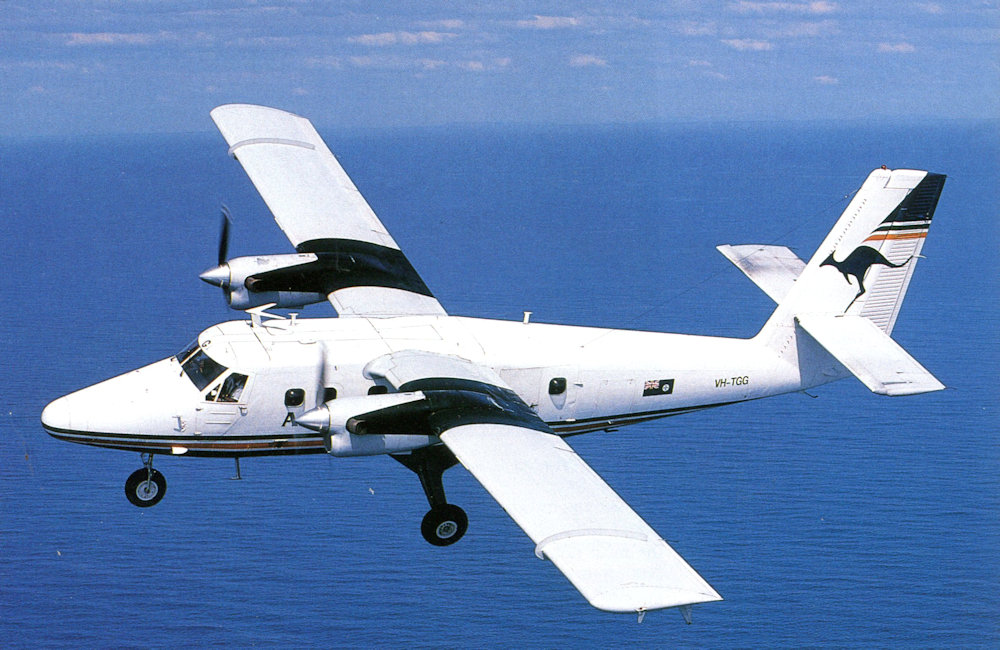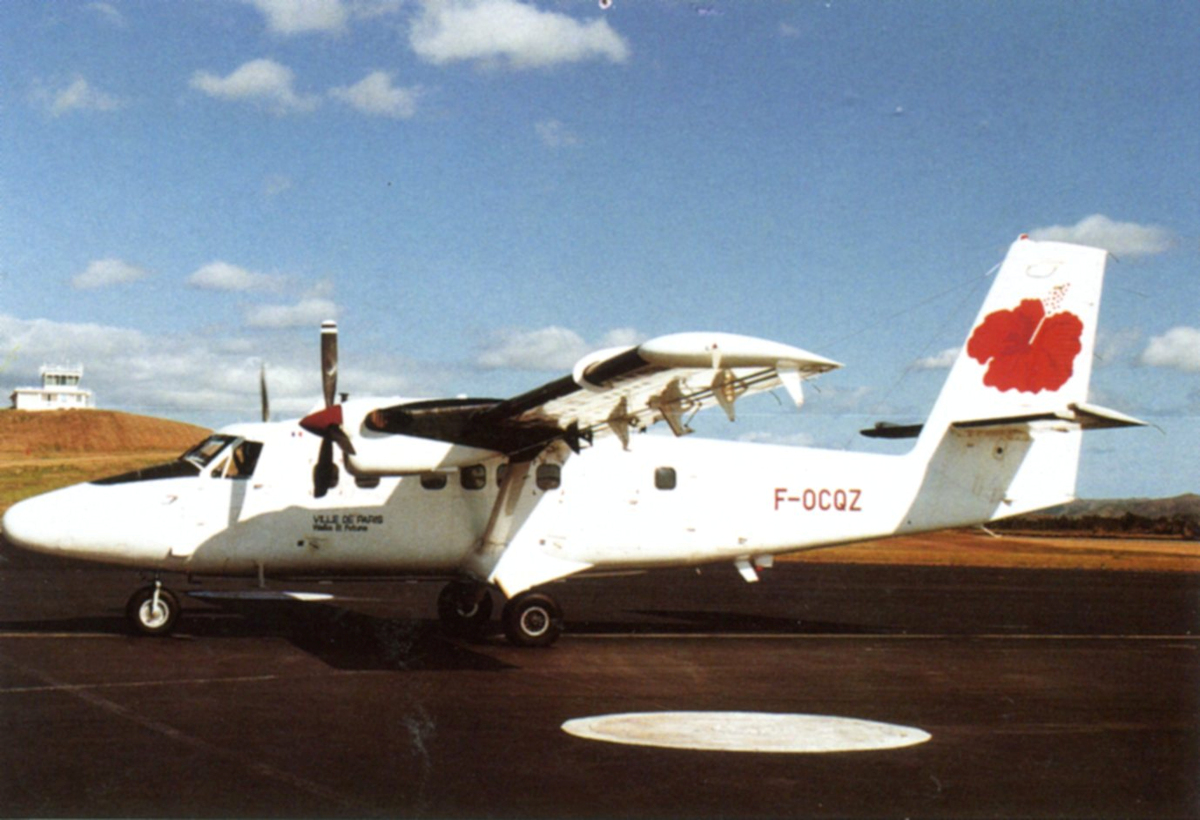
Twin Otter F-OCQZ from Air Caledonia.
by Steve Mackenzie

In my opinion one of the nicest looking civil types around is the De Havilland Canada DHC-6 Twin Otter' turbo prop commuter a/c. This type has appeared in hundreds of colour schemes around the world and would make a fine addition to any model collection.
There is a very good model of this type made in 1/72 scale by Matchbox (later re-released by Revell). Luckily this is one of the better Matchbox kits with not much evidence of the infamous Matchbox Trenchdigger' having been let loose on this one. The kit is pretty accurate but the following areas need refinement to improve them - door outlines, hinges and handles, exhausts, wing fences, trailing edge flap hinges (i.e the usual sorts of things). No interior for the passenger cabin is included but little could be seen through the kit windows anyway.
One area to closely look at in photos of these aircraft and the accompanying drawings is the aerial fit which varies enormously between different operators and in some cases individual machines in the same company. Another thing to watch for (although it does not apply to any of the aircraft drawn here) is that some machines have an additional window in the airstair door on the port side. If necessary you will have to cut and glaze a window to match.
Being a tricycle undercarraige type the model will need plenty of weight in the nose to avoid it becoming a tail stander. It might be a good idea to reinforce the undercarraige leg joints with a metal pin to take the extra weight in the nose (by the way if your model still sits on its tail or if you forget to weight the nose, don't despair as the real thing apparently has problems also and is seen in photos with a prop under the fuselage just behind the rear entry doors) !!
Although quite a few of the overseas Twin Otters can be seen in very colourful overall paint schemes, the local machines (from Australia and our Pacific neighbours) appear to mostly be in Gloss White with coloured cheat lines etc added. Most companies have some sort of Gloss Black area around the engine nacelles and sometimes the horizontal tail surfaces also to hide the exhaust stain. This varies between operators and the drawings shpould be observed carefully. Some machines carry deicing boots on the leading edges of wings and tailplanes ( this can be either Black or a light buff colour).
Registrations are usually carried on the fuselage either side and sometimes on the wings (although many appear to not have the wing markings). If I can definitely say what the drawing subjects carry it is noted, otherwise you can make up your own mind whether you want to add them. Propellor blades are mostly a dark metallic gray colour.
I previously covered the schemes in this article way back in Vol 11/2-3 and 16/1 but that was with hand drawn, toned B/W profiles, while these issues are still available on the IPMS(NSW) website under the back issues I have redone them with full colour Computer profiles which are much more useful. These current profiles have also been upgraded to correct a few small issues and add extra detail.
Steve Mackenzie
Societe Caledonienne de Transports Aeriens, trading as Air Caledonie (Air Caledonia in English) is the domestic airline of the French collective of New Caledonia. 1954 as Transpac, it has operated Twin Otters 1968. The Twotters are used to supply an Air service between the Wallis et Futuna Islands (which are a separate entity to New Caledonia) under a long running contract (the current 5 year contract runs till 2023).
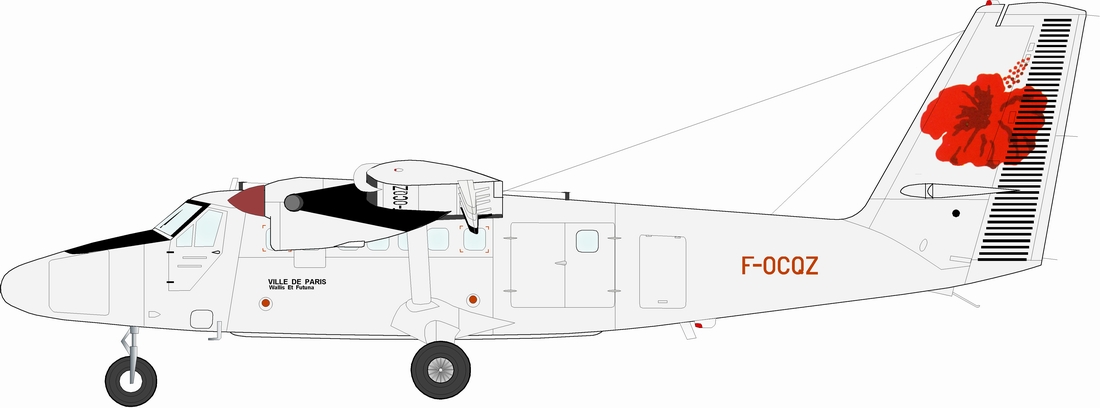
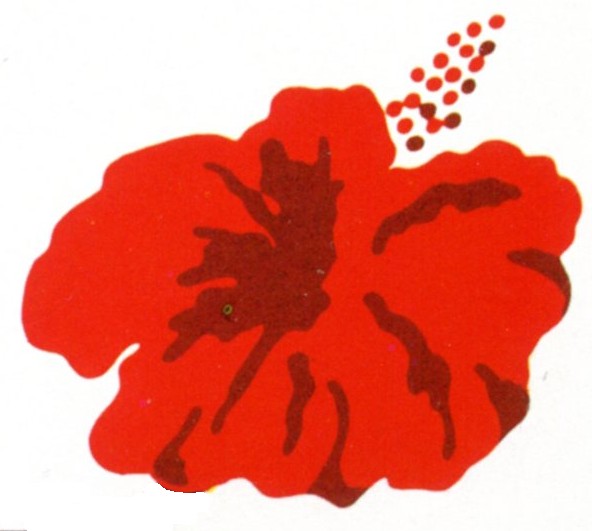
I have an image of one of their Twotters in a different scheme, and later they operated as Aircalin (Air Caledonia International) using a simpler, more artistic style of the above tail markings. I hope to draw those two schemes in a later issue.
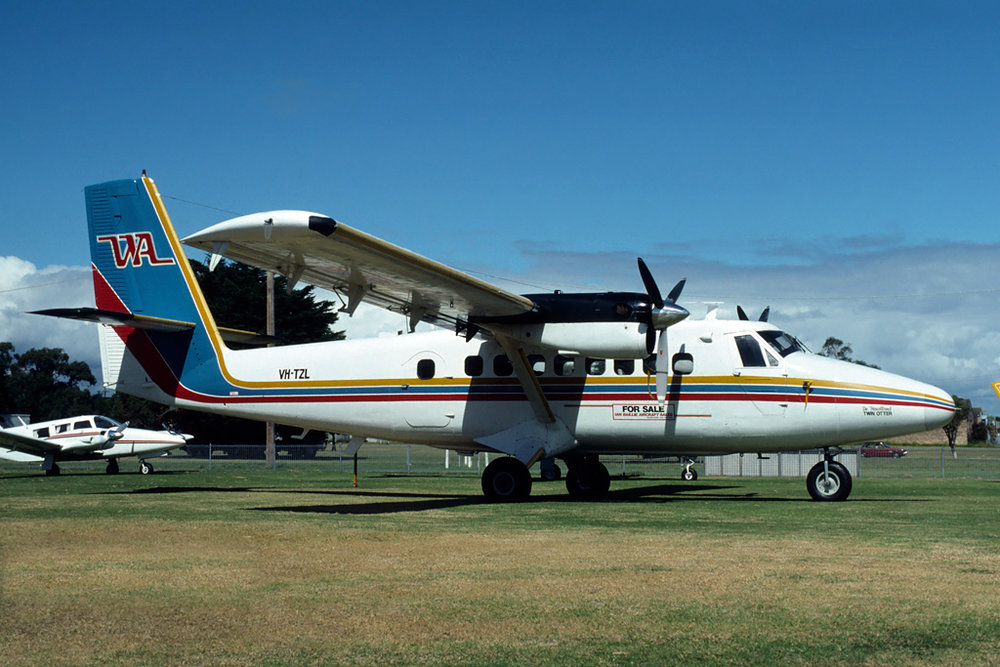
Whitaker Air which operated in QLD from memory had a fleet of Twotters, which operated in at least four schemes (including Great Kepple Island for which they provided an air service to the resort under contract). I have drawn the most common here, others will hopefully follow in due course.
